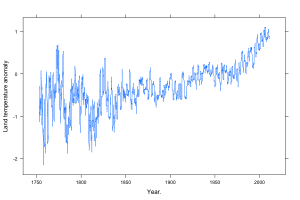As you will have heard, there is reasonable evidence that an infant has been cured of HIV infection, by giving fairly high doses of antiretroviral drugs immediately after birth. If this case continues to hold up to investigation, what next?
You would normally want to do a randomized trial, to get evidence that this wasn’t just a one-off fluke, but that’s going to be hard. Obviously, parents would be very reluctant to have their children randomized. To make matters worse, since the usual antiretroviral treatments are almost completely effective in preventing mother:child transmission, anymost infected infants in Western countries will have been born to mothers who either didn’t know they were infected or knew and were unable to get normal medical care. This is not a group you want to target for research, for both practical and ethical reasons. The same issue arises in countries where mother:child transmission is more common. Antiretroviral treatment to prevent transmission is simpler and less expensive than the potentially-curative treatment treatment for the infant, so any system that is able to deliver the cure reliably would rarely need to.
On the other hand, if this (relatively drastic) treatment really does work, not having a randomised trial is likely to slow its acceptance. Back in the late 1980s, a new lung-bypass technique for premature infants was invented. This technique, ECMO, appeared to dramatically improve survival, but it required major surgery. Researchers at the University of Michigan tried a novel ‘play the winner’ trial design that was intended to reduce the number of infants randomized to an ineffective treatment. In a sense, this worked. The trial ended up randomising 11 infants to ECMO, all of whom survived, and one to standard treatment, who died. Unfortunately, the trial design was sufficiently unusual and unfamiliar that people didn’t seem to be able to interpret the results (it’s been the subject of multiple statistics papers). A similar design was used in a follow-up trial at Harvard, ending up with 28 infants given ECMO (with one death) and 10 given standard treatment (with four deaths). Again, there wasn’t consensus on what the result meant, and it wasn’t until after a third, standard randomised trial was done that the treatment was widely used — and if the standard trial had been done first, fewer infants would have been randomised to standard care, and infants outside the trial would have gotten the treatment earlier.
Individual-level randomisation may well not be possible to do efficiently and ethically. Another approach, in some country that is making efforts to provide prophylaxis against mother:child transmission and that believes treating infected infants is feasible, would be a stepped-wedge design. This design takes advantage of the fact that we can’t do everything at once. If treatment is being rolled out across a developing country, some areas will get it first and some will get it later. Rather than a haphazard allocation (or one based on where the health ministry officials have relatives, or where the international TV representatives want to film) using a truly random order allows evaluation of the effectiveness of treatment policy while still delivering treatment to as many people as possible, as fast as possible. This design also has the advantage of testing a real public-health question: does a policy of treating infected infants result in fewer infected children? It’s conceivable, especially in a country where health care is expensive and there’s a lot of prejudice against HIV-positive people, that having treatment available for infected infants could reduce the use of HIV testing and prophylaxis by pregnant women, and the net effect could be negative.
